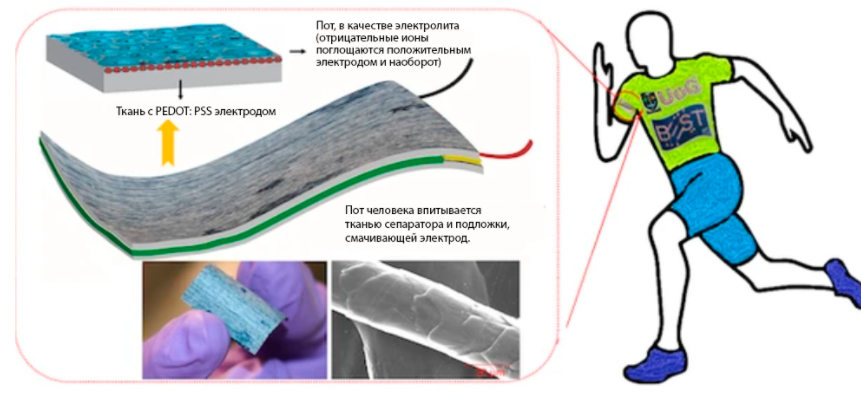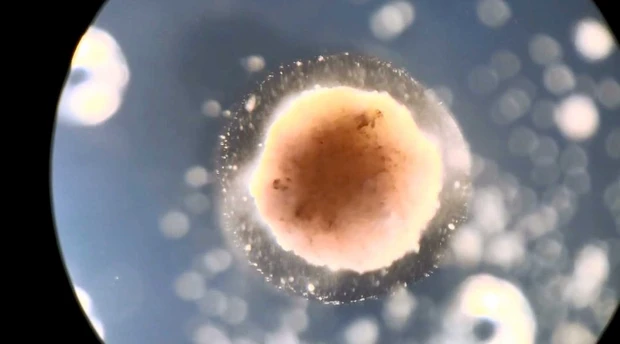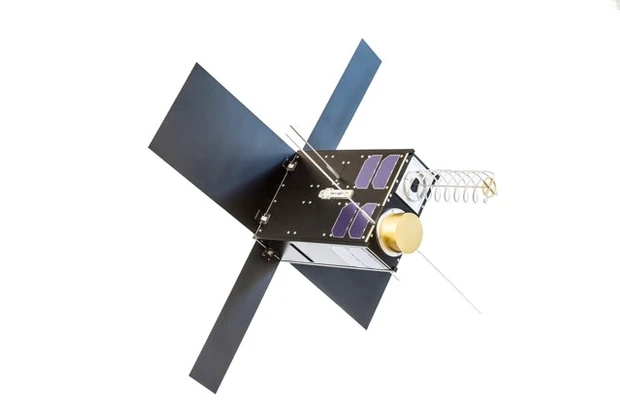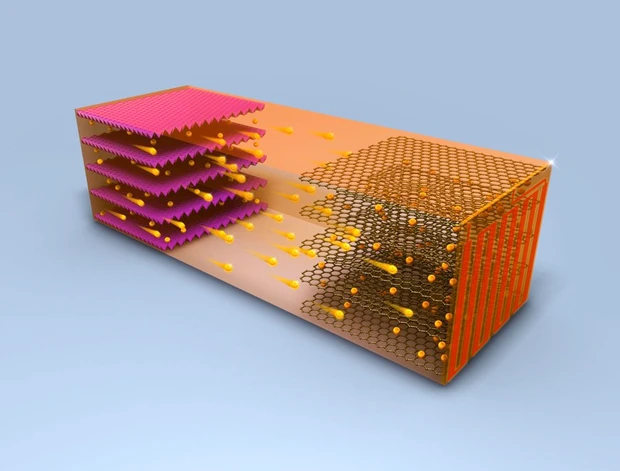Table of Contents
The future will come sooner than you think. These new technologies will change the way we live, how we take care of our bodies, and help prevent climate catastrophe.
At any given time as you read this article, scientists and engineers are creating the technologies of the future and changing the world around us, big and small. We don’t realize it because we’re used to change, but the pace of progress over the past half century in fields as broad as computing, medicine, communications, and materials science has been atypically staggering.
However, no one has a personal jetpack powered by a perpetual motion machine, so the work must go on. We donned our futurist’s visionary glasses and compiled a list of exciting future technologies that will change our world, from bionic human beings to inventions that could stop the climate crisis.
Laboratory dairy products
You’ve probably heard of artificial meat and Wagyu steaks grown cell by cell in the lab, but what about other animal products? A growing number of biotech companies around the world are investigating laboratory-based dairy products, including milk, ice cream, cheese, and eggs. And a lot of people think they’ve made a breakthrough.
The dairy industry is not even close to being environmentally friendly. It accounts for 4% of global carbon emissions, more than air travel and shipping combined. At the same time, there is a growing demand for greener milks that could be poured into our tea cups and cereal bowls.
Compared to meat, making milk in the lab is not that difficult. Instead of growing it from stem cells, most researchers are trying to get milk through fermentation, creating milk proteins, whey and casein. Some products from companies such as Perfect Day have already entered the US market, and work is underway to replicate the taste and nutritional properties of regular cow’s milk.
In addition, the researchers are working on laboratory mozzarella, which melts perfectly on the surface of pizza, as well as other cheeses and ice cream.
Digital “twins” that monitor your health
In the Star Trek series, which influenced our vision of future technology, people could enter the medical bay and have their entire body digitally scanned for signs of illness and injury. According to the creators of the Q Bio scanner, the appearance of such equipment in real life would improve the health of people and at the same time reduce the burden on doctors.
A US company has built a scanner that will measure hundreds of biomarkers in about an hour, from hormone levels, liver fat and inflammation markers to any type of cancer. She intends to use this data to create a 3D digital avatar of a patient’s body, known as a “digital twin”, that can be tracked over time and updated with each new scan.
artificial eyes
Bionic eyes have been a staple of science fiction for decades, but now real-world research is starting to catch up with forward-thinking science fiction. Many technologies are entering the market that make it possible for people with various visual impairments to see.
In January 2021, Israeli surgeons implanted the world’s first artificial cornea on a 78-year-old completely blind man. When his bandages were removed, the patient could immediately read and recognize family members. The implant fuses naturally with human tissues, so the body does not reject it.
In 2020, Belgian scientists developed an artificial iris adapted to smart contact lenses that correct a range of visual impairments. Scientists are even working on wireless brain implants that don’t require vision to use.
Researchers at Monash University in Australia are working on testing a system where users wear camera glasses. It sends data directly to an implant on the surface of the brain and gives the user the ability to see.
Airports for drones and flying taxis
Our congested cities are in desperate need of a breather, and unloading may come from the air rather than the roads. Plans for another type of transport hub – for delivery drones and electric air taxis – are becoming a reality as the city’s first air port receives funding from the UK government.
The hub being built in Coventry will be a pilot project and hopefully a proof of concept for the company behind it. The idea is to be autonomously powered by a hydrogen generator and eliminate the need for so many trucks and personal vehicles on our roads, replacing them with a clean alternative in the form of a new type of small aircraft co-developed by Hyundai and Airbus.
Infrastructure will also be of great importance. The Civil Aviation Authority is exploring the possibility of creating air corridors that could link the city center to a local airport or distribution center.
Smart stitches that detect infections
How does a doctor know if a patient’s wound is infected? He can wait for the patient to show signs of infection, or talk to an Ohio high school student who has developed a brilliant, life-saving invention.
At 17, Dacia Taylor invented sutures that turn from bright red to dark purple when a wound becomes infected by detecting a change in the skin’s pH level. When an injury or surgical wound becomes infected, its pH rises from 5 to 9. Taylor found that beetroot juice naturally changes color at pH 9 and used it as a dye for sutures.
While other solutions are available—smart sutures coated with conductive material that can detect the state of a wound by changing electrical resistance and send a message to a smartphone—they are less useful in developing countries where smartphone use is not widespread.
Energy saving bricks
Scientists have found a way to store energy in the red bricks used to build houses. Researchers at Washington University in St. Louis have developed a method that can turn a cheap and widely available building material into “smart bricks” that can store energy like a battery.
Although the research is still in the proof-of-concept stage, the scientists claim that walls made from such bricks “can store a significant amount of energy” and “recharge hundreds of thousands of times within an hour.”

Researchers have developed a method for converting red bricks into a type of energy storage device called a supercapacitor.
They applied a conductive coating, known as Pedot, to the brick samples. The coating seeped through the porous structure of the fired brick, turning it into an “energy storage electrode”.
According to the researchers, iron oxide, which is the red pigment of the bricks, helped a lot in this process.
Sweat powered smart watch
Engineers at the University of Glasgow have developed a new type of flexible supercapacitor that stores energy by replacing the electrolytes found in conventional batteries with human sweat.
A supercapacitor can be fully charged with as little as 20 microliters of liquid. At the same time, it is strong enough to withstand the 4000 flexion/extension cycles that can be encountered in use.
The device works by coating a polyester-cellulose fabric with a thin layer of polymer that acts as a supercapacitor electrode.
When the fabric absorbs the wearer’s sweat, positive and negative ions interact with the polymer surface, starting an electrochemical reaction that generates electricity.

“Conventional batteries are cheaper and more plentiful than ever before, but they are often manufactured using unstable environmentally harmful materials,” says Prof. Ravinder Dahia , Team Leader of Bendable Electronics and Sensing Technologies (Best) from the University’s School of Engineering James Watt, Glasgow.
“Disposal of wearable devices can be dangerous, as toxic fluids from a damaged battery can get on your skin.
What we have been able to do for the first time is to show that human sweat provides a real opportunity to completely get rid of toxic materials and get excellent charging / discharging characteristics.”
Self-healing “living concrete”

Using sand, gel and bacteria, scientists have created what they call “living concrete”.
The researchers said this building material has a structural load-bearing function, is capable of self-healing and is more environmentally friendly than concrete, the second most used material on Earth after water.
The University of Colorado Boulder team believes their work paves the way for future building structures that can “heal their own cracks, suck dangerous toxins out of the air, or even glow on command.”
living robots

Tiny hybrid robots made using stem cells from frog embryos could one day be used to swim into specific areas of the human body that require treatment, or to collect microplastics from the oceans.
“These are new living machines,” said Joshua Bongard , a computer scientist and robotics expert at the University of Vermont who co-designed the millimetric bots known as xenobots. “These are not traditional robots and not known animal species. This is a new class of artifacts: a living, programmable organism.”
Touchable virtual reality
Researchers at Northwestern University have developed a prototype device that aims to make touch felt inside virtual reality using a flexible material fitted with tiny vibrating components that can be attached to the skin.
The system, known as epidermal VR, may be useful in other cases as well. For example, it can transfer a child’s touch to the display to a family member located in another part of the world, or help people with amputations feel the touch again.
In games, it can warn players when the corresponding part of the character’s body is hit.
The device consists of 32 vibrating actuators on a thin 15 x 15 cm silicone polymer plate that sticks to the skin and does not have large batteries and wires.
Near field communication (NFC) technology is used to transfer data, which is used in many smartphones for mobile payments today.
“The result is a thin and light system that can be worn and used indefinitely,” says Professor John A. Rogers , who worked on the project.
The scientists hope the technology could eventually find its way into clothing, allowing people with prosthetics to wear virtual reality shirts that mimic the touch of their fingertips.
Internet for everyone

It seems that we can no longer live without the Internet, but still only about half of the world’s population has access to it. There are many reasons for this, including economic and social ones, but for some, the Internet is simply not available due to lack of connectivity.
Google is slowly trying to fix the problem by using helium balloons to cover previously inaccessible areas, while Facebook has abandoned plans to do the same with drones, which means companies like Hiber have a chance to seize the initiative. Hiber took a different approach by launching its own network of shoebox-sized microsatellites into low Earth orbit that activate a modem connected to your computer or other device and transmit data when the satellite is in range.
Their satellites orbit the Earth 16 times a day and are already being used by the British Antarctic Survey to provide Internet access to the farthest corners of our planet.
Heart Rate T-shirt

Wearable fitness bracelets that measure heart rate are nothing new, but as numerous studies have shown, their accuracy can vary greatly (especially if you rely on them to count calories ). This is fine if you just want to understand how hard you are training, but for the pros, accuracy is everything.
A new T-shirt from smart materials company KYMIRA reads heart rate data using a single fabric-printed conductor that measures the heartbeat and uploads the data to the cloud via Bluetooth. The received data is processed by algorithms to accurately detect irregular heartbeats such as arrhythmia, which can save your life.
It’s not just athletes who can benefit from the technology. “The possibilities this product offers to both athletes and the general public are amazing,” says Tim Brownstone, CEO and Founder of KYMIRA. “We plan to develop a clinical version of this product to provide heart attack warning to those who already have heart disease.”
The power of coffee
The London coffee industry generates over 200,000 tons of waste every year. What to do with it? Entrepreneur Arthur Kay’s idea is to use his bio-bean company to turn 85% of coffee waste into biofuel to heat buildings and fuel vehicles. The company is already the world’s largest coffee waste recycler. She collects coffee grounds from large chains and restaurants, as well as small cafes, and delivers them to her processing plant in Cambridgeshire.
There, the grounds are dried and processed before being used to create pellets and firewood for biofuels, bioplastics and flavors.
Drown the forest fires in sound
Wildfires could one day be fought with drones that bounce loud sound into the trees below . Since sound is made up of pressure waves, it can be used to break down the structure of the air surrounding a fire, cutting off the oxygen supply to the fuel. With the right frequency, the fire simply goes out, as recently demonstrated by researchers at George Mason University in Virginia using a sonic extinguisher. Apparently, low frequencies work best.
Artificial intelligence – as a scientist
Cut off the head of a flatworm and a new one will grow. Cut it in half and you will have two new worms. Give him some radiation and he’ll recover. Scientists have long wanted to find out the mechanisms involved, but the secret has eluded them all the time. Connecting to the case of artificial intelligence, designed at Tufts University, Massachusetts, allowed to unravel the mystery of flatworm regeneration in just 42 hours. The result was a comprehensive model of how the flatworm’s genes allow it to regenerate.
While it is still necessary for humans to feed artificial intelligence information, the machine in this experiment was able to create a new abstract theory on its own — a huge step towards the development of a conscious computer, and perhaps a significant step in the way we conduct research.
Car batteries that charge in 10 minutes

Rapid charging of electric vehicles is seen as key to their uptake, as drivers will be able to stop at a service station and fully charge their car in the time it takes to drink coffee and go to the bathroom – no longer than a normal break.
But rapidly charging lithium-ion batteries can destroy them, according to researchers at the University of Pennsylvania in the US. This is because the flow of lithium particles, known as ions, from one electrode to another to charge the device and keep the energy ready for use does not occur smoothly when charging quickly at lower temperatures.
However, the scientists found that if the batteries could heat up to 60°C in just 10 minutes and then quickly cool down to ambient temperature, lithium emissions would not form and thermal damage could be avoided.
The battery design they came up with is self-heating, using thin nickel foil to create an electrical circuit that heats up in less than 30 seconds to heat the inside of the battery. The rapid cooling that will be required after the battery is charged will be carried out using a special system built into the car.
A study published in the journal Joule showed that such batteries can fully charge an electric car in 10 minutes.
Self-driving trucks
We were almost used to the idea of self-driving cars even before we saw them on the roads. In truth, you may well see a lot more self-driving trucks – after all, it’s the logistics that “make the world go round.” They will be cheaper to operate than conventional heavy trucks, move more smoothly and therefore consume less fuel. Computers never get tired and don’t need comfortable breaks, so they can take on longer routes. And they could go in columns, one behind the other, to minimize wind resistance.
Companies like Mercedes and Peloton are already exploring these opportunities, and if the promised benefits are real, trucking companies could upgrade their entire fleet overnight. On the flip side, it could instantly put drivers out of work and even employees at truck stops designed to service them, but many companies say the vehicles will still need a human passenger to ensure the safety of the loads.
Artificial neurons on silicon chips

Scientists have found a way to attach artificial neurons to silicon chips, mimicking the neurons in our nervous system and replicating their electrical properties.
“Until now, neurons have been like black boxes, but we have been able to open them and look inside,” said Professor Alain Nogaret from the University of Bath, who led the project.
“Our work is paradigm-shifting because it provides a robust method for reproducing the electrical properties of real neurons in great detail. Our neurons require only 140 nanowatts of energy. This is one-billionth of the power consumption of a microprocessor compared to other attempts to create synthetic neurons.”
The researchers hope their work could be used in medical implants to treat heart failure and Alzheimer’s, as it requires very little energy.
floating farms
According to UN forecasts, by 2050 there will be two billion more people in the world, which will increase the need for food by 70%. By that time, 80% of us will live in cities, and most of the food we consume in the city will be imported. Thus, farms moored at sea or on inland lakes, close to cities, will definitely shorten the path of food to the consumer.
But how will they work? Designed by architect Javier Ponce of Forward Thinking Architecture, it is a 24-meter-high three-level structure with solar panels on top to provide power. On the middle tier, various vegetables are grown on an area of 51,000 m2, but instead of soil, nutrients from the liquid are used for them. These substances enter the bottom layer to feed fish that are bred in a confined space.
One 350m x 200m smart floating farm will produce about 8.1 tons of vegetables and 1.7 tons of fish per year. The units are designed to be connected together, which is convenient since we will need many farms: for example, Dubai alone imports 11,000 tons of fruits and vegetables every day.
Pleistocene park
Russian scientist Sergei Zimov hopes to recreate a 12,000-year-old wildlife park environment for herbivores (wild horse and bison) by replacing extinct megafauna (like mammoths) with modern hybrids. Zimov will study the impact of animals on the environment and climate.
Almost perfect isolation
Most people in the Western world have two things: a refrigerator and a mobile phone. Aerogels could revolutionize the production of both.
Airgel is a material with tiny pores. It is created by removing all the liquid from the gel, and the pores in it can be up to 95% of the volume. These pores are so small (between 20 and 50 nanometers) that gas molecules simply cannot “squeeze” through them. As a result, aerogels cannot transfer heat, making them incredibly insulating materials.
The unusual electrical properties of aerogels also make them suitable as lightweight antennas for mobile phones, satellites and aircraft.




One thought on “Future technologies: 21 ideas on how to change our world”